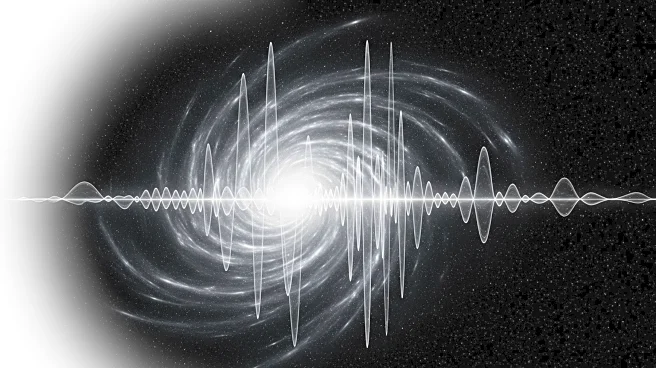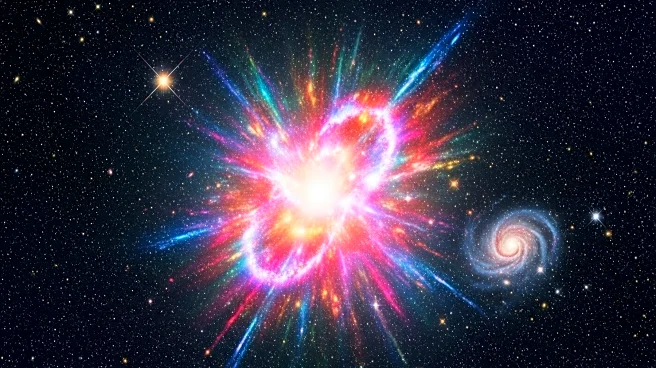What's Happening?
A significant astronomical event has been observed by the Gravitational-wave Optical Transient Observer project, which detected the light from a supernova in the spiral galaxy NGC 7331. This supernova, named SN2025rbs, was the result of a thermonuclear explosion of a white dwarf star that occurred approximately 40 million years ago. The detection was made on July 14, and subsequent imaging was conducted by astroimager Rodney Pommier from Portland, Oregon. Pommier's images, taken with a 17-inch f/6.8 telescope, show the supernova as a dot near the galaxy's core, with the initial image captured last year and additional exposure taken on August 21.
Why It's Important?
The detection of supernova SN2025rbs is a noteworthy event in the field of astronomy, providing valuable data for scientists studying the life cycles of stars and the dynamics of galaxies. Supernovae are critical for understanding the distribution of elements in the universe, as they are responsible for dispersing heavy elements into space, which can eventually form new stars and planets. This discovery also highlights the capabilities of the Gravitational-wave Optical Transient Observer project in identifying and tracking cosmic events, contributing to the broader understanding of the universe's evolution.















